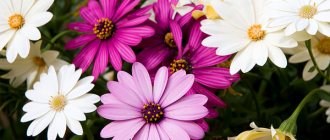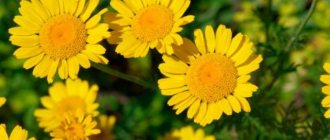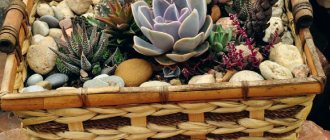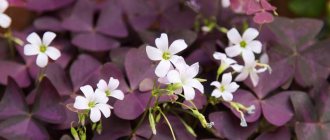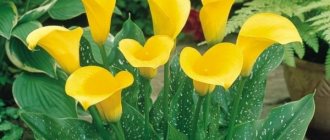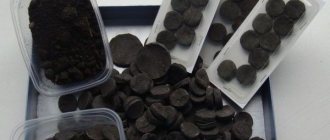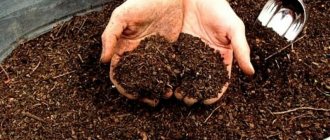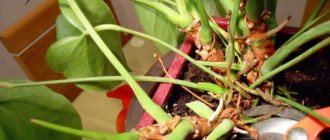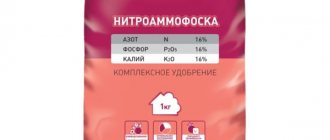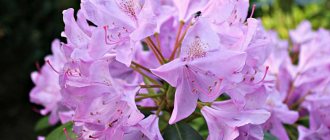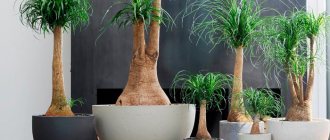Chamomile is a botanical genus that belongs to the large family Asteraceae or Asteraceae. This group includes more than 32 thousand plant species. At the same time, many people are interested in: colored daisies - what are they called? In fact, there are quite a lot of such plants, each of which has its own characteristics and names.
Today there are many varieties of colored daisies known.
External signs
The main characteristic of daisies is the appearance of the flower, which consists of white petals and a yellow center. The daisy genus includes many different crops. Moreover, they are low herbaceous plants with pinnately dissected leaves. Each of them includes many thin lobes.
The diameter of the conical or hemispherical baskets can be different - from 2 to 20 cm. The structure includes 2 types of petals - tubular yellow in the center and pistillate white at the edges.
Regular garden daisies have white petals and a yellow center.
Main diseases and pests of crops and control measures
Field chamomile
Bush garden chamomile gets sick extremely rarely. Most often these are fungal diseases, when a gray coating appears on the leaves of individual plants. In this case, the affected bush should be removed as quickly as possible, and the soil and remaining plants should be treated with a copper fungicide.
Treatment with an insecticide usually helps get rid of all types of parasites. There is also a more natural way - attracting animals such as hedgehogs and birds that like to feast on slugs or insects to your site. Small garden daisies, as pyrethrum is often popularly called, will not cause much trouble to care for, but for a long time they can decorate gardeners’ areas with bright, beautiful flowers.
0 0 votes
Article rating
Common varieties grown by breeders
Over the years of work, breeders have managed to develop many colored daisies that are distinguished by their excellent decorative properties. The most popular and widespread plants include:
- pyrethrum;
- osteospermum;
- Felice;
- doronicum;
- gatsaniya;
- echinacea;
- arctotis.
Many people are interested in what yellow daisies are called. There are quite a few species of such plants, but most often we are talking about Doronicum.
This is not a complete list of crops that are similar in flower structure to ordinary garden daisies. Each plant has its own botanical features and characteristics.
With a black center
Arctotis is considered one of the most famous multi-colored daisies. It is very similar to an ordinary garden chamomile.
The flower includes white petals and a black center with a yellow ring around it. The main difference between the culture is the very large size of the flowers.
Arctotis is a beautiful flower with a dark center.
With a brown center
One of the most popular and famous daisy-like flowers is the gerbera. It is often grown in summer cottages for cutting and arranging bouquets. The plant blooms until mid-August. The height of the crop reaches 70 cm.
The center of the flower is usually brown. In this case, the petals can have different shades. The culture is considered very unpretentious and can easily withstand winter cold.
Another type of colored daisies with a brown center is Venidium. It has yellow petals. The flowers reach a diameter of 10 cm. At the same time, the stems grow up to 70-80 cm.
There are varieties of Venidium with different petal colors. They can be white, pink or orange.
This plant is rarely found in gardens. Most often it is grown in pots or flowerpots. The flowering of the crop lasts from the end of July until the beginning of frost.
Venidium is a beautiful chamomile with a brown center.
Gatsania
This plant comes in many colors. The petals of such daisies are lilac, red, and orange. There are also varieties in which one tone gradually turns into another.
More than 40 varieties of gazania are found in nature. They are resistant to frost and drought. Low-growing bushes 30-40 cm in size are planted not only in open ground, but also in boxes or pots.
Doronicum
This is a perennial crop that has triangular foliage of a rich emerald color. The height of the bushes varies depending on the variety. It can range from 30 cm to 1 m.
The flowers have a yellowish-orange hue and reach a diameter of 6-10 cm.
After cutting, the flowers retain their appearance for a long time. That’s why they are often used to make bouquets and combine with other plants.
Coreopsis
The plant can have different types. Depending on this, its height can be 60-100 cm. In this case, the flowers reach 3-7 cm in diameter.
Coreopsis blooms begin in mid-July. This period lasts 60-80 days.
These small daisies can be regular or double. They have bright sunny colors - from pale yellow to rich orange. The culture looks best in large flower beds or front gardens.
Blooming coreopsis
Rudbeckia
A popular crop that looks like large daisies with dark brown stamens and a few yellow petals.
The plant is characterized by later flowering, which begins in the second half of August or September. Culture can become a real decoration of any autumn flower bed.
The height of rudbeckia depends on the variety and can range from 50 cm to 2 m. The petals most often have a yellow tint. However, pink, cream, and orange flowers are sometimes found.
Pyrethrum
The shape of the flowers of the plant is very reminiscent of cornflower and daisies. Its white varieties are easily confused with them.
At the same time, pyrethrum can have different shades - purple, lilac, crimson, pink. Some varieties of the plant are called Persian and Caucasian chamomile.
The culture reaches a height of 60 cm. It has pinnately dissected leaves of a rich green color. The flower basket of the plant does not exceed 6 cm in diameter. The culture is very popular among gardeners because it has a decorative appearance and is undemanding to care.
Caucasian chamomile pyrethrum
Other
Multi-colored daisies have many other varieties. They all differ in color, size and botanical characteristics. Popular garden crops include:
- Nivyanik - this plant resembles chamomile more than others. The culture is popularly called large or giant chamomile. This genus includes no more than 20 plants. The most popular representative is the largest cornflower. Its hybrids can grow up to 1 m in height. Beautiful terry varieties that have unusually shaped petals are considered even higher.
- Calendula - this plant is considered very popular. It is low maintenance. Culture belongs to the Astrov family and is considered one of its most widespread representatives. These orange daisies are characterized by different sizes. Low-growing varieties have a height of 20-30 cm, and tall varieties - 60-65. The advantage of calendula is the possibility of active reproduction by self-seeding.
- Helichrysum - this crop is characterized by grayish stems and leaves. Moreover, it has white buds. The bush does not exceed 10 cm in height, but has a large width - 45-50 cm. The flowering period of the crop lasts from June to August. It can be annual or perennial. The most common varieties of helichrysums include awl-leaved, bract-shaped, and helmet-shaped.
- Cosmea is a tall relative of daisies. Its stems reach a height of 70-150 cm. The plant often propagates by self-seeding and is distinguished by its low maintenance requirements and decorative appearance. In addition, cosmos are not afraid of wind and frost. It can grow even in poor and depleted soil. Today there are more than 20 types of this culture. Its flowers resemble pink, red, lilac, and white daisies.
- Echinacea - This plant has different shades. Breeders offer gardeners pink, crimson, white, orange, yellow, and greenish shades. The centers differ in the shape of a hemisphere and sometimes stand out significantly against the background of the petals. Echinaceas are characterized by smooth growth and long life expectancy.
Pyrethrum is a bright and low-maintenance flower.
The best selection of beautiful photos and pictures of daisies
Tenderness is like a gift
It is customary to give flowers for any holiday or for various events. For men and women, for children and adults, yellow daisy is the best and most suitable gift. And we offer a new, unusual approach. We offer not only to present live plants, but also to expand the range of surprises for our family and loved ones.
What will it be, a photograph or a picture, which was drawn by a professional or an amateur, but all the works are interesting, delicately beautiful, and reveal one or another idea. They visually convey your words so clearly that the child will understand the essence of such a surprise. After all, even a photo of field daisies can surprise and lift your spirits!
These cards will help bring us closer to our loved ones. It will be a huge plus if the person dear to us is far away. These daisy flowers will make us closer. They are able to hide the distance by bringing our loved one closer to us and giving us the opportunity to tell him about our feelings.
Beautiful daisies in a vase can solve another problem. Imagine how difficult it is sometimes with such a fast pace of life to remember everything and always do everything correctly and on time. It’s easy to forget even the most important things, such as the day you met your loved one, the Spring Festival, or even your birthday. Then drawn pictures will come to the rescue. You can always, even at the very last moment, give a wonderful gift, delicate flowers in a jug.
Give flowers to yourself
Isn't it nice to give yourself good surprises? Should you start the day with a smile, or cheer yourself up before work? And all this can be easily achieved if you install good pictures with daisies on your desktop.
Warm flowers like the sun will give you positive emotions. Whether it’s a photo on your desktop or pictures of daisies on your phone, we should be surrounded only by beautiful and kind things, and then our life will become much more beautiful.
Greeting cards with daisies
Lots of pictures of daisies
What plants are most often confused with colored chamomile?
Classic chamomile is a perennial whose petals have a white tint. If there are colorful daisy-like plants growing in the garden bed, it is likely that they are gerberas. In appearance they are very similar to daisies. However, the petals of these flowers can have different shades. Thus, there are yellow, pink, purple, and crimson daisies.
Today there are several dozen varieties of gerbera. However, most of these plants are found in Madagascar and Africa.
Gerbera was first described by a scientist from Holland, Jan Gronovinus. This happened back in the eighteenth century. The botanist named this flower in honor of his friend Traugott Gerber. Subsequently, Carl Linnaeus, who systematized plants, used this name, indicating it in his works. Since the end of the nineteenth century, the crop began to be actively cultivated.
Gerberas are very similar to daisies and come in many varieties.
Like chamomile, gerbera is a perennial plant. Moreover, it is distinguished by leaves that have an elongated shape and a pointed end. The foliage grows from a basal rosette.
The flower stalks of this culture can reach a height of 60 cm. The flowers form single inflorescences in the form of baskets. Some varieties can reach a diameter of 30 cm.
Gerbera is characterized by a very long flowering period. Quite often, flower beds with these flowers retain their decorative value for several months.
Summer plants
In the garden you can plant many flowers similar to daisies, which continue to bloom all summer. Popular crops grown by many gardeners include:
- calendula;
- helichrysum daisy flower;
- daisy.
Thus, helichrysum is a flower with a yellow center and white petals. The main difference from chamomile is that its petals are strongly bent upward.
Daisy is a popular garden crop that has many types and varieties. There are varieties with white petals, which are very similar to chamomile. You can also use varieties of other shades to decorate your garden - there are quite a lot of them.
Calendula has a bright orange color.
Calendula is considered an equally popular plant that belongs to the Asteraceae family. It is characterized by a bright orange hue. Therefore, calendula serves as a decoration for any flower bed.
Nielberry, anemone, and heliopsis will help decorate the summer area. Doronicum, anacyclus, and helenium are also suitable for this purpose. All these daisy-like plants begin flowering at the end of May or in the first half of summer. At the same time, they retain their decorative effect until the beginning of autumn.
Blooming in early autumn
After the summer crops have finished flowering, the garden is decorated with plants that bloom in late August or early autumn. They are distinguished by a brighter and more saturated color of the petals.
The most common plants in this category include:
- gatsaniya;
- Venidium;
- arctotis.
Venidium is considered a rather exotic plant that is rarely found in temperate latitudes. It is characterized by bright orange flowers with white petals. The flowering of the plant continues until frost.
Gazania has a wide variety of shades. These flowers come in white, yellow, and pink. Multi-flowered plants look very beautiful. They can combine different shades - yellow with orange or white with purple. The culture is considered very unpretentious. At the same time, the plant blooms well, which is why it is often used in gardening.
Another common plant is arctotis. This flower most closely resembles a chamomile. It is characterized by simple white petals with a black center and a yellow ring around it. At the same time, the plant has fairly large flowers.
Gatsaniya can have a variety of shades.
In addition, in autumn gardens there are colorful flowers similar to daisies. These include gerberas, asters, and rudbeckias. Bacardi chrysanthemums and many other plants look very beautiful. They can have not only colored, but also white petals. However, gardeners often choose bright varieties. Among these crops there are orange, yellow, and crimson varieties.
It is difficult to imagine an autumn garden without chrysanthemums. Indian, autumn, and arctic varieties are similar to daisies. But to a greater extent this applies to the Bacardi variety. Such flowers can have a variety of shades - yellow, pink, red, purple. They are easy to care for and last a long time when cut.
Such crops differ in the height and size of the stems. They are not as small as daisies, and therefore attract a lot of attention.
Healing properties
Field chamomile is a very valuable medicinal plant.
The flowers contain many useful substances:
- Tanning;
- Vitamin C;
- Glucose;
- Essential oils;
- Flavonoids;
- Multivitamins.
A decoction of flowers is used as:
- Depressant;
- Anti-inflammatory agent;
- Painkiller;
- Vasodilator;
- Diuretic;
- Antiallergic;
- Cold remedy;
- Expectorant (field bindweed will also help);
- Choleretic agent;
- Laxative.
For medicinal purposes, the plant is used in the form of:
- Medicinal teas;
- lotion;
- Rinse;
- Decoctions.
Field chamomile is widely used in aromatherapy.
According to statistics, field chamomile is one of the most commonly used medicinal plants in medicine.
Important! Doctors do not advise pregnant women to use this plant for medicinal purposes.
Use for cosmetic purposes
Cosmetic companies often use field chamomile (pharmacy chamomile) when producing creams. Also, flower extract (extract) is often used in shampoos and conditioners.
It is especially good to use chamomile in the form of a decoction for rinsing hair, which will help with:
- Fight against dandruff;
- Hair growth stimulation;
- Hair coloring;
- Strengthening hair.
Recipe for preparing a decoction for rinsing: pour two tablespoons of the raw material with boiling water, leave for half an hour, add to the water for rinsing.
Chamomile tea
Chamomile tea is widely used for medicinal purposes.
Using this drink is especially helpful for:
- Stomach diseases (gastritis, upset);
- Diseases of the mouth and throat (sore throat, stomatitis);
- Diseases of the upper respiratory tract (laryngitis, bronchitis);
- Insomnia;
- Diarrhea and dysentery.
Recipe for making tea: brew one tablespoon of raw material with boiling water, leave for one hour, filter and take half a glass three times a day. You can add honey, milk, sugar to tea.
Essential oil
Many medications contain chamomile oil. It has excellent wound healing, anti-inflammatory, and disinfectant effects. The oil is even used in the treatment of stomach ulcers. The oil has a shelf life of five years.
Arctotis
Arctotis is a member of the Asteraceae family, which is common in Angola and Zimbabwe. Culture is divided into 2 types:
- subshrubs;
- herbaceous plants.
On the surface of the leaf blades you can see dense pubescence, the shade of which is close to white. The incised-toothed foliage is located on the shoots in an opposite manner. The diameter of the inflorescences is within 8 cm. The petals of the plant are painted in a different palette:
- purple;
- yellow;
- white;
- pink;
- purple.
Flowers can be planted along the walls.
How to store it correctly?
Its benefits depend on the correct drying of the plant. If you are collecting only flowers without stems, they should be spread evenly in one layer on a clean surface. It is important to avoid direct sunlight on the raw materials. It is imperative to ensure adequate air circulation.
If the flower was collected with a stem, the plants can be tied into bunches and hung in a dry and dark room. In this case, you also need to ensure good ventilation.
To dry the flowers evenly, they need to be constantly turned over. Drying time is usually a maximum of 2 weeks. From 1 kg of fresh plants it is possible to obtain approximately 250 g of dry raw materials.
The finished product should be completely dry and rustling.
Experts do not recommend drying crops in electric dryers and cabinets. Heat treatment leads to the loss of most of the nutrients.
Flowers can be kept in glass jars.
At the final stage, you need to prepare the chamomile for storage. In this case, it is permissible to use the following options:
- Cardboard boxes. This is the simplest option. It is recommended to store raw materials in a dark and well-ventilated place. It is important to ensure that the room is cool enough.
- Textile bags. In such a situation, it is recommended to use bags made of natural fabrics. They must be unpainted. Dried raw materials should be placed in containers and hung on the walls. This will help maintain its shape and benefits.
- Glass jars. In them, dried raw materials look very decorative. If the containers are beautifully decorated, they can be used as part of the interior.
Coreopsis
Coreopsis is an ornamental crop, a bright representative of the Asteraceae family. Depending on the variety, the plant can be either annual or perennial. Aerial openwork growth, consists of thin branches. The dissected green foliage is naturally lanceolate in shape.
Note! If desired, you can plant coreopsis according to a predetermined planting pattern in a flower garden near the house or in lawn grass. The plant will become a real decoration of the site.
Cosmea
The annual herbaceous type is distinguished by spreading bushes, the height of which does not exceed 50 cm. Cosmos petals can be painted in pink, purple and burgundy tones. The diameter of the inflorescences reaches 10 cm. The annual plant can reproduce by self-sowing. The crop is grown both in open ground and at home.
There are a huge number of flowers that look like chamomile. The flower descriptions presented above will help you determine which plant is ideal for growing in your own garden.
Care for feverfew (by month)
Winter (January to February). You can even sow the seeds this early if you have access to extra light. Such early sowing will allow you to get flowering bushes as early as May.
March. Early flowering seedlings. Shoots appear in 7 - 11 days. To avoid thinning out the seedlings, small seeds are mixed with dry sand. Indoors, seedlings quickly stretch, so it is better to keep them on a windowsill near a window, on an insulated glazed loggia or on a veranda.
April. Sowing continues. This can be done both indoors and in greenhouses. In a greenhouse or under polyethylene, cover the seeds with a layer of soil 3-5 mm thick. In a cool spring, seedlings sometimes appear later, only after 15-18 days.
May June. When transplanting seedlings, make sure that the sprouts require a space of approximately 25 x 30 cm. At first, shade the seedlings from bright sun. Sow the seeds in an open area for the chamomile to bloom in late summer. Weeding of self-seeding plants. Replant overwintered chamomile bushes and self-sow in a new location.
July. Mass flowering of the chamomile plant. Replant volunteer plants and flowering shrubs in their new location. Water during dry periods. Apply fertilizers to poor soils. Trim faded inflorescences to avoid mass self-seeding. Sow seeds from flowering plants early next summer.
August. Trim the inflorescences. Replant flowering plants in pots and balcony boxes, moving them to the veranda, balcony or windowsill. Water in dry weather.
September. Continues to bloom, as mature plants tolerate frosts down to -4°C.
October, first half of November. Prune cover plants in early winter. Mulch the soil or use spruce branches to cover variegated pyrethrum.
Decorative flowers, also called daisies
Various decorative and indoor flowers of the same Asteraceae family are often called daisies. It is usually quite easy to distinguish them from Matricaria species. Many of them have large inflorescences or flowers of a wide variety of colors: yellow, orange, red, pink, blue and others. We remember that in true daisies the inner part of the flower can only be yellow, and the outer flowers can only be white.
Australian daisies are annual plants of the genus Helipterum. They were brought to European countries, as the name suggests, from Australia. The inflorescences of Helipterums are usually single, large and very bright. Here's what some of them look like:
Alpine chamomile is the name given to the species of asters of the same name. These are annual plants that can be planted in gardens and homestead areas. They are easy to care for, but very beautiful. Dense bushes with single inflorescences retain their attractiveness until frost.
African daisies are the names given to indoor gazania and osteospermum species. They have large inflorescences and very bright flower colors. Some perennial species are grown at home in flowerpots. This is what some of them look like:
They are also called daisies and chrysanthemums, especially the Chamomile and Bacardi species. Thanks to their tall stems and large inflorescences, they are used to form bouquets.
These yellow chrysanthemums are also often called daisies:
Gerberas are sometimes called this way:
In general, to say that calling different plants daisies is a mistake would be too reckless. In common parlance, the term chamomile does not have such a strict meaning as in the scientific community; here this word is usually understood as an inflorescence of a specific shape. Therefore, for a person not immersed in science, the ability to distinguish true daisies from other flowers of the Asteraceae family may only be required when collecting the plant as a medicinal raw material. In order not to accidentally collect inflorescences of little use, you must first make sure that the collector is looking at chamomile, and it is for this that the difference between the species must be understood and be able to detect.
Calendula terry
Calendula is naturally endowed with many beneficial properties. Decorative culture belongs to the category of perennials. The height of the bushes can reach 40-80 cm. The oval-shaped pubescent foliage can be colored in various green shades depending on the variety. Cadendula can be planted in flower beds or grown along garden paths.
Terry calendula
